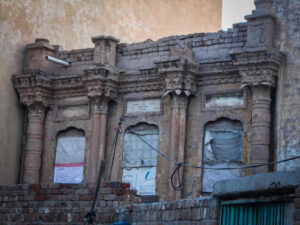🙏 Seek Your Attention: Take a moment to learn about the rich heritage of ancient India and the history of one of South Asia’s oldest temples, the Multan Sun Temple. This is not just a story of cultural and spiritual significance but also of resilience against invasions and destruction.

The Aditya Sun Temple: A Beacon of Ancient Civilization
The Multan Sun Temple, once a magnificent center of worship, stands as a symbol of India’s spiritual and architectural prowess. Its origins trace back over 5,000 years, making it one of the oldest revered temples in South Asia. The temple’s historical prominence has been acknowledged by:
- Herodotus (5th-century Greek historian),
- Hiuen Tsang (Chinese traveler who visited in 641 AD),
- Al-Istakhri (10th-century Persian geographer).
These accounts highlight the temple’s immense wealth and its significance as a cultural and spiritual hub.
The Splendor of the Sun God
The Sun Temple was dedicated to the Sun God, Aditya, and was a marvel of craftsmanship:
- The idol of the Sun God was made of pure gold, with ruby eyes that glimmered like fire.
- The temple’s doors, pillars, and shikhara were adorned with gold, silver, and precious gemstones.
- Pilgrims traveled from far and wide to pay homage, making it a beacon of devotion for thousands of Hindus.
The city’s very name, Multan, is derived from its Sanskrit origin, Mulasthana, meaning “the place of the Sun idol.”
The Era of Invasions: A Story of Resistance and Tragedy
The temple’s splendor and wealth attracted relentless invasions:
- Muhammad bin Qasim (8th Century):
- The Umayyad Caliphate conquered Multan under Qasim’s leadership.
- The temple became a significant source of income for the Muslim government.
- The custodians of the temple were taken captive, and its treasures were looted.
- Mahmud of Ghazni (1026 AD):
- Known for his ruthless invasions, Mahmud plundered and destroyed the temple, reducing it to ruins.
A Legacy of Strategic Blackmail
The Sun Temple became a pawn in political games. Whenever Hindu rulers sought to reclaim the region, Muslim rulers threatened to destroy the temple. This emotional blackmail often forced Hindu kings to retreat, underlining the temple’s symbolic importance in the cultural psyche of the region.
Accounts by Al-Biruni and Other Chroniclers
- Al-Biruni (11th Century):
The Persian scholar documented the complete destruction of the temple. By his time, the once-vibrant pilgrimage site had ceased to exist, with its ruins a silent testament to its former glory. - Greek Admiral Skylax (515 BC):
Even before these invasions, the temple was noted by Skylax during his exploration, showcasing its antiquity.
A Rich Heritage Erased, Yet Remembered
The Sun Temple of Multan is not just a tale of destruction but also a reminder of resilience. Despite invasions and looting, its memory lives on through historical accounts and oral traditions. Its ruins tell a story of a civilization that valued spirituality, art, and culture, and its loss is a stark reminder of the cost of invasions.
Reviving the Glory
Understanding the history of the Multan Sun Temple is crucial to preserving India’s ancient heritage. It reminds us of a time when the subcontinent was a center of learning, wealth, and spirituality, and how it withstood centuries of cultural erosion.
Let us honor the memory of this sacred site by sharing its story and preserving the legacy of our ancestors.




https://maps.app.goo.gl/PGP8g7QCjNySRUWx7
For more updates and detailed coverage of this case and other issues affecting the Hindu and Sindhi communities in Sindh, Pakistan, stay tuned to Sindh Renaissance.






